Wat Phra Singh
Wat Phra Singh is the largest and most significant wat in the city. It is located on the main street, which runs right into the vast temple precinct that was once the center of the settlement. Phra Sing was laid out in 1345 by King Pha Yu, with his father’s ashes resting in a large chedi behind the vihan.
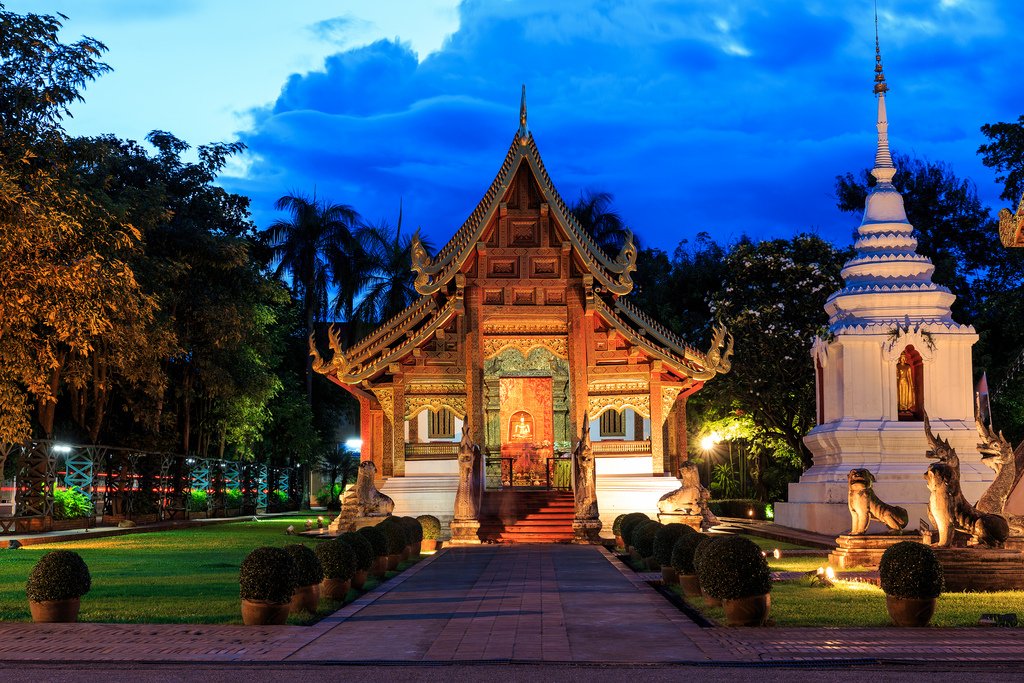
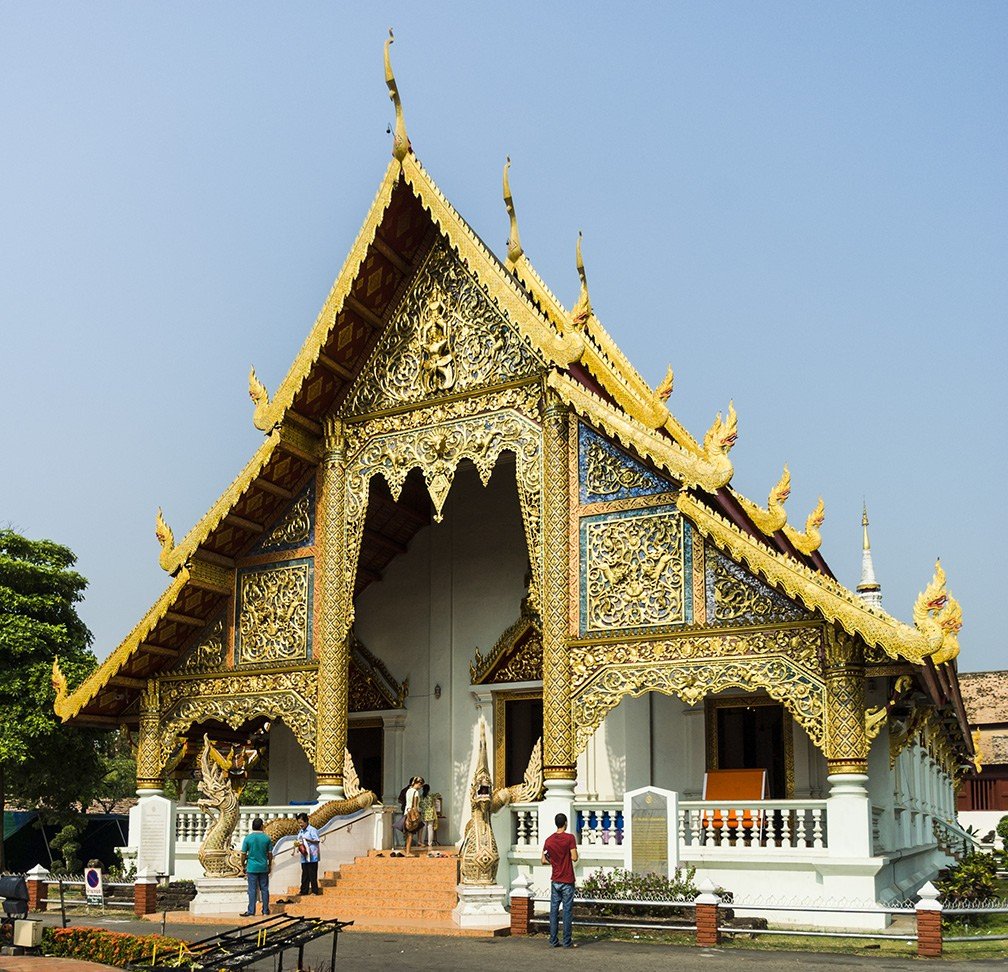
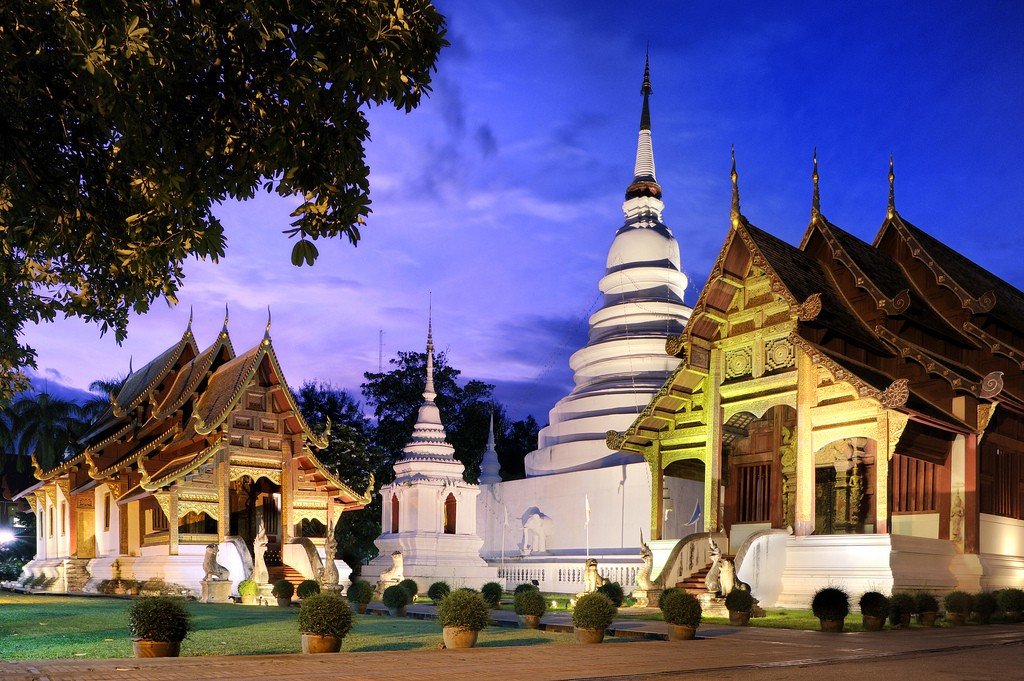
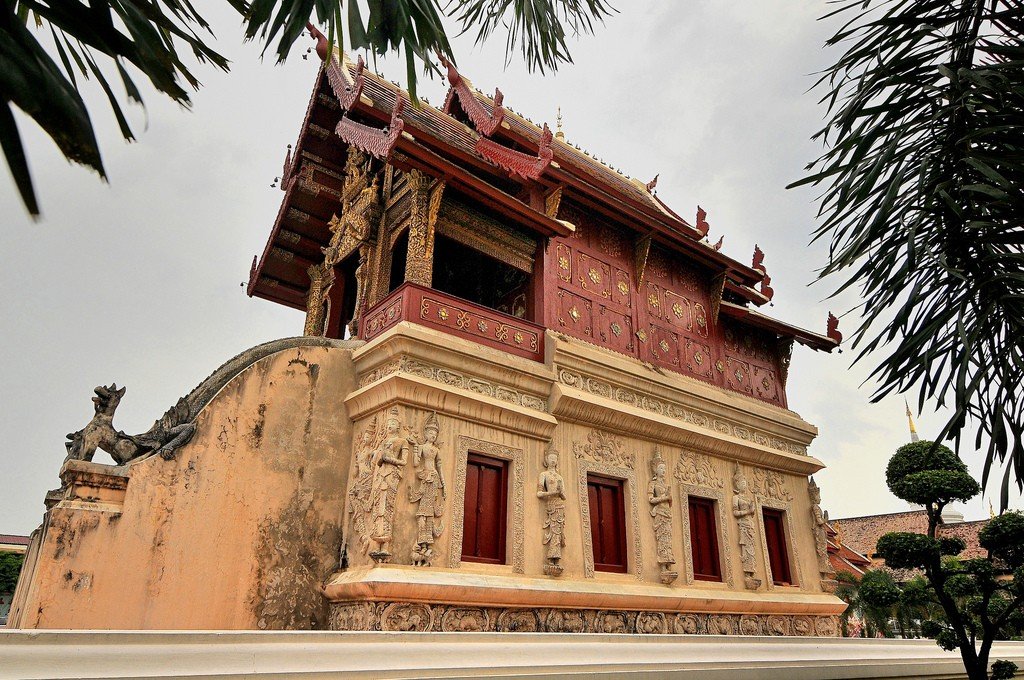
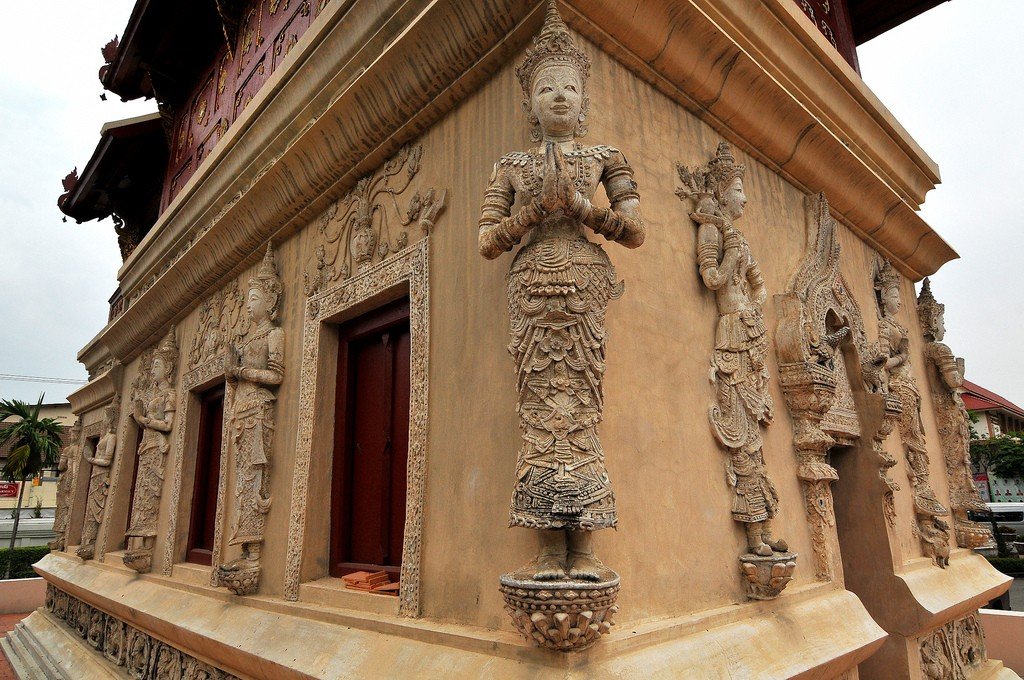
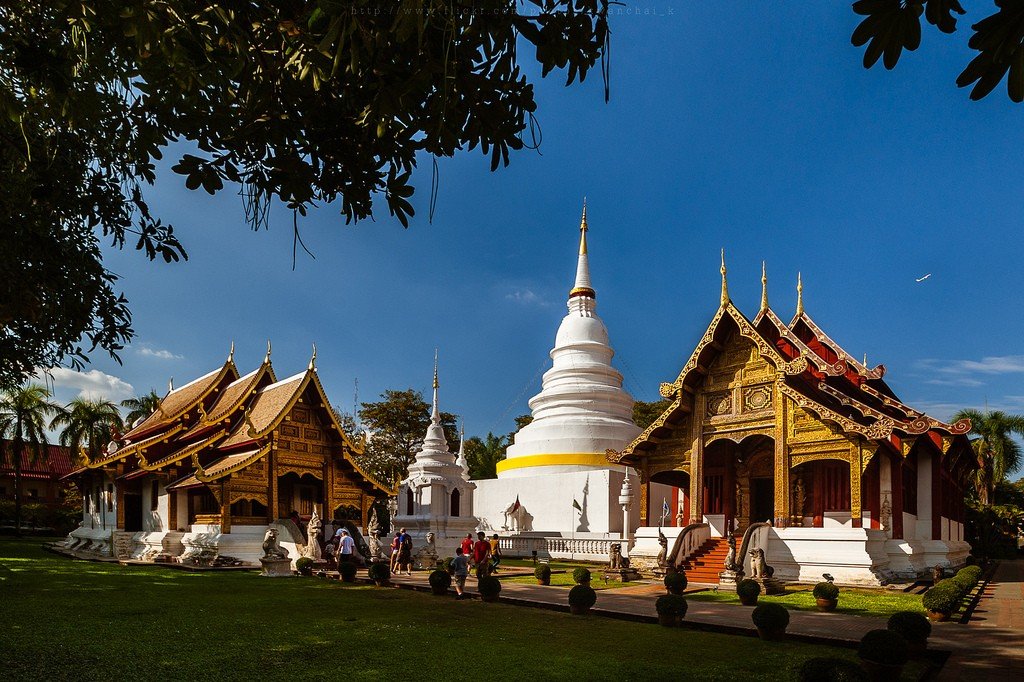
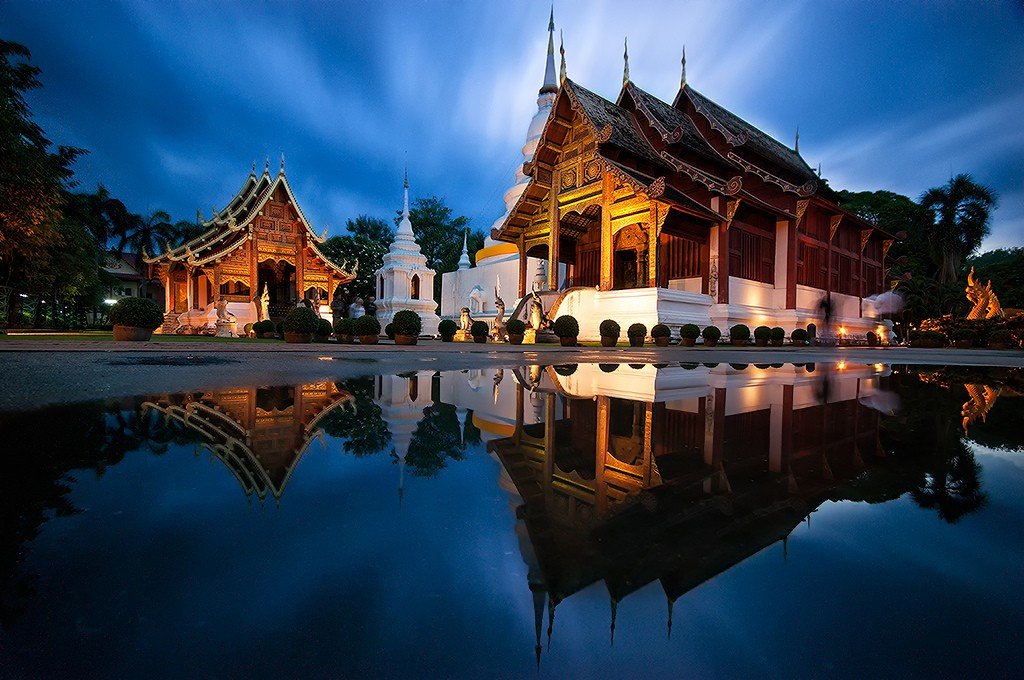
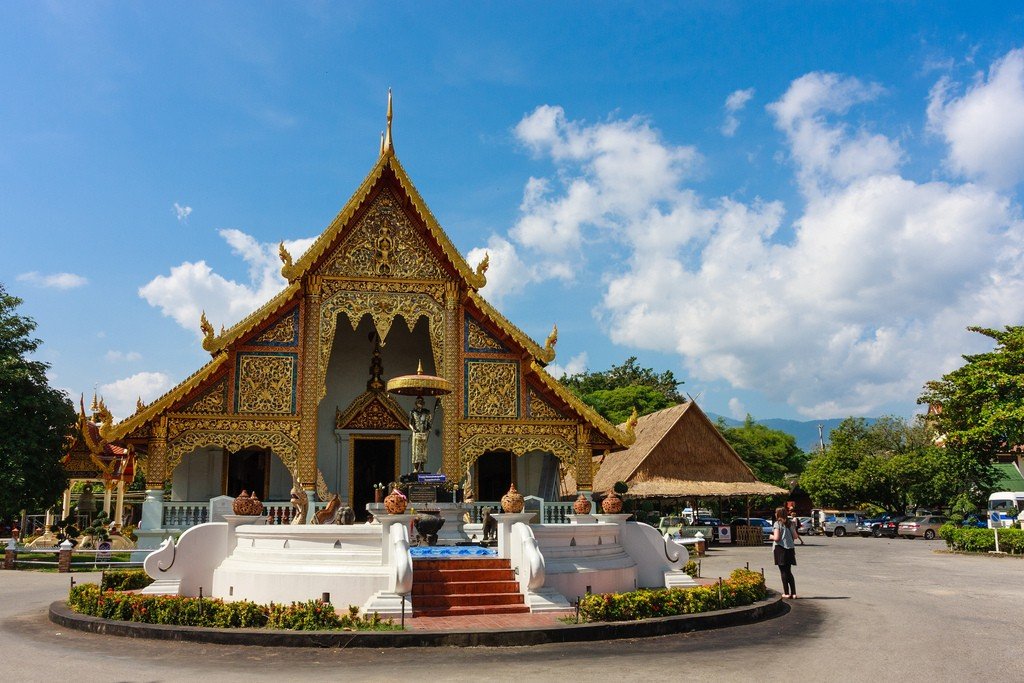
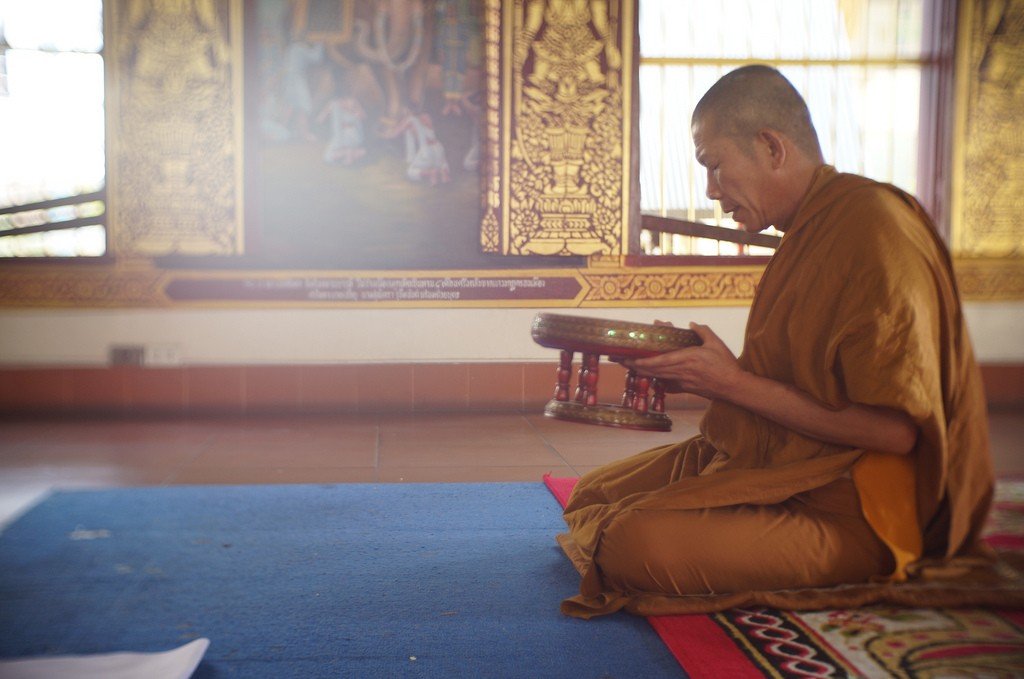
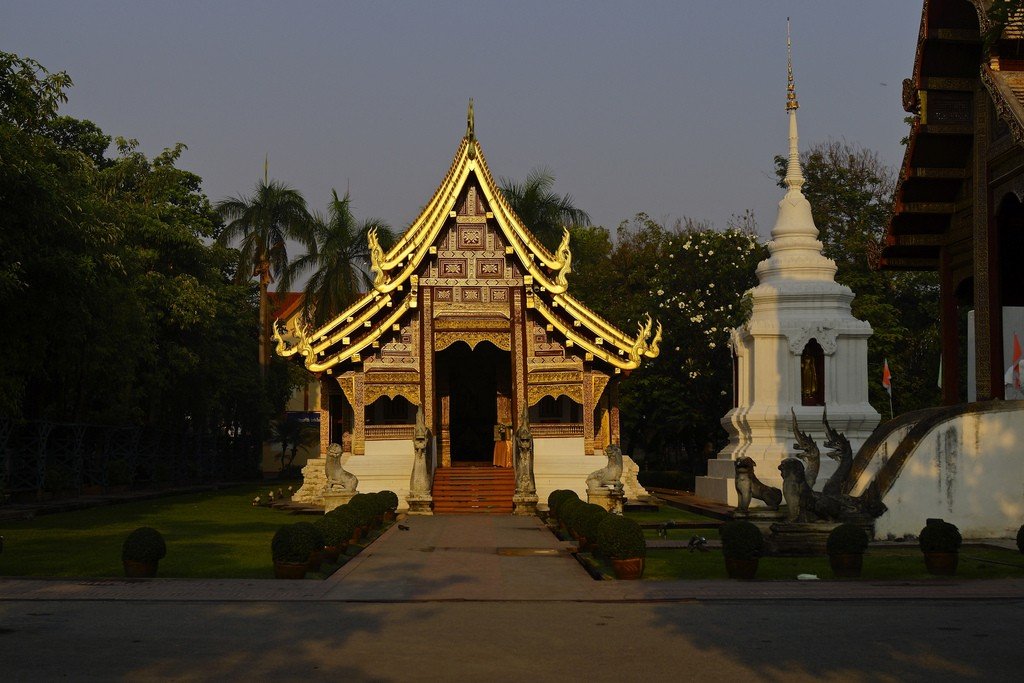
The vihan, built in 1518, is decorated with gables with carvings of outstanding work, added, however, later. The small library on the right in front of the vihan, a graceful 14th century structure, is considered a gem of Thai temple architecture. The tall white plinth is decorated with remarkable moldings, the red-and-gold wooden upper floor is covered with skillful inlaid carvings.”
The small bot next to the chedi was built around 1600 during the Burmese occupation; probably the Burmese also placed numerous lion-guards at the entrances, so characteristic of Burmese temple architecture. Well-preserved 19th-century murals tell the story of Prince Phra Sang Tong, who was born in a golden shell. The clothing and poses of the characters point to Burmese influence.
The most sacred part of the wat is a small wooden building of slender proportions behind the bot, called Phra Vihan Lai Kham. This building was built under King Seng Myang Ma (1385-1401) for the famous, legendary Phra Sing Buddha statue. It is a seated Buddha in the pose of invoking the Earth Goddess as a witness. The statue is in the Sukhothai style. According to legend, it originated from Ceylon, traveled to Ayutthaya, Kampung Phet and Chiang Rai, Luangprabang and came to Ayutthaya again. Since 1767 it has stood in Chiang Mai. However, it is not known whether this sculpture is a copy. The National Museum in Bangkok and Nakhonsitthammarat each have one more of the same figure; no art historian has yet been able to determine which of the three is the original. Of course, each of the cities believes it possesses the original.
The temple contains two other 15th-century sacred images: a bronze statue encrusted with precious stones, and a large figure of Buddha, also seated in the pose of invoking the Earth goddess as witness.
.